Table of Contents
Demonstrative adjectives are words we use to point out specific nouns in a sentence. The most common ones are this, that, these, and those. Learning how to use these words is important for beginners because it makes sentences easier to understand.
Using demonstrative adjectives properly helps you speak and write more clearly, allowing for better communication in both everyday situations and formal settings.
What Are Demonstrative Adjective?

Demonstrative adjectives are words that show which person, place, or thing we are talking about. They help us point out something near or far. The four main demonstrative adjectives are this, that, these, and those.
Example Sentences:
This book is very interesting.
I don’t like that movie.
These shoes are comfortable.
Usage of Demonstrative Adjectives
Demonstrative adjectives are used to specify and identify nouns based on their proximity to the speaker. The four demonstrative adjectives in English are this, that, these, and those. Each one serves a unique purpose, helping to make communication clearer and more precise
1. Indicating Proximity
- This and these refer to nouns that are close to the speaker.
- That and those refer to nouns that are farther away.
Examples:
- This pencil is sharp. (The pencil is near the speaker.)
- These shoes are comfortable. (The shoes are close to the speaker.)
- That tree is very tall. (The tree is at a distance.)
- Those chairs look old. (The chairs are far from the speaker.)
2. Distinguishing Between Singular and Plural
- This and that are used with singular nouns.
- These and those are used with plural nouns.
Examples:
- This apple is fresh. (Refers to one specific apple.)
- These apples are fresh. (Refers to multiple apples that are nearby.)
- That dog is barking. (Refers to one dog that is farther away.)
- Those dogs are barking. (Refers to multiple dogs that are far away.)
3. Clarifying Specificity
Demonstrative adjectives help specify exactly which noun is being referred to, making communication clearer.
Example:
- I prefer this sandwich over that one. (The speaker prefers the sandwich near them instead of another one farther away.)
4. Expressing Time
Demonstrative adjectives can also indicate time, referring to something in the present or past.
Examples:
- This week has been very busy. (Refers to the current week.)
- That day was unforgettable. (Refers to a specific day in the past.)
Demonstrative Adjectives vs. Demonstrative Pronouns
| Feature | Demonstrative Adjectives | Demonstrative Pronouns |
|---|---|---|
| Function | Modify a noun and provide more details | Replace a noun entirely |
| Words Used | This, That, These, Those | This, That, These, Those |
| Usage | Always followed by a noun | Stand alone without a noun |
| Example Sentence | This book is interesting (modifies book) | This is my favorite book (replaces book) |
| That car is fast (modifies car) | That was a great movie (replaces movie) | |
| These cookies are delicious (modifies cookies) | These are my cookies (replaces cookies) | |
| Those mountains are beautiful (modifies mountains) | Those are the mountains I climbed (replaces mountains) |
Demonstratives vs. Relative Pronouns
Both demonstratives and relative pronouns are essential parts of speech in English, but they serve very different roles.
1. Demonstrative Adjectives & Pronouns
- Used to point out specific nouns.
- Indicate the location or distance of nouns in relation to the speaker or listener.
- Help specify whether the noun is singular or plural.
Common Demonstratives
- This, that, these, those
Examples of Demonstrative Adjectives
- This book is interesting. (Refers to one specific book that is close.)
- That car across the street is mine. (Refers to a car far away.)
- These apples are fresh. (Refers to multiple apples close to the speaker.)
- Those mountains in the distance look beautiful. (Refers to mountains far away.)
2. Relative Pronouns
- Used to connect a dependent clause to a main clause.
- Provide additional information about a person, thing, or idea in the sentence.
Common Relative Pronouns
- Who, whom, which, that, whose
Examples of Relative Pronouns
- The teacher who gave us homework is nice. (Who links teacher to more information.)
- The student whom the teacher praised worked hard. (Whom refers to the object of praise.)
- The car, which is red, is parked outside. (Which adds extra detail about the car.)
- The book that I bought was interesting. (That connects the noun book with more information.)
- The man whose dog is barking lives next door. (Whose shows possession of the dog.)
Example Sentences with Demonstrative Adjectives
- This book is fascinating;
- I couldn’t put it down.
- That car over there belongs to my neighbor.
- These apples are fresher than the ones at the store.
- Those shoes are on sale at the mall.
- I love this movie; it’s one of my all-time favorites.
- That painting was created by a famous artist.
- These flowers are blooming beautifully in the garden.
- Those chairs are uncomfortable for long periods of sitting.
- This weather is perfect for a picnic.
- Can you pass me that pen on the table?
Rules To Keep In Mind
1. Proximity
- Use this and these for things that are near.
- Use that and those for things that are farther away.
✅ This car is mine (near).
✅ That car is his (far).
2. Singular and Plural
- This and that are used for singular nouns.
- These and those are used for plural nouns.
✅ These apples (plural) are fresh.
3. Placement
- Demonstrative adjectives always come before the noun they modify.
✅ This phone
❌ Phone this
4. Use with Clear Reference
- Avoid using demonstrative adjectives if the reference is unclear.
❌ I like this.
✅ I like this blue dress.
5. Agreement with Noun
- Demonstrative adjectives must agree in number with the noun.
✅ That dog is barking. (Singular)
✅ Those dogs are playing. (Plural)
FAQ
What is a demonstrative adjective with examples?
A demonstrative adjective points to a specific noun. The four demonstrative adjectives are this, that, these, and those.
Examples:
This book is interesting.
That car is fast.
These apples are fresh.
Those mountains are beautiful.
What are few examples of demonstrative adjective?
This bag is heavy.
That house is big.
These flowers are beautiful.
Those shoes are expensive.
Demonstrative Adjectives vs. Demonstrative Pronouns
Demonstrative Adjectives: Modify nouns by pointing to specific things.
This book is interesting.
That car is fast.
These cookies are delicious.
Those mountains are beautiful.
Demonstrative Pronouns: Replace nouns and stand alone in a sentence.
This is my favorite book.
That was a great movie.
These are my cookies.
Those are the mountains I climbed.
You May Also Like

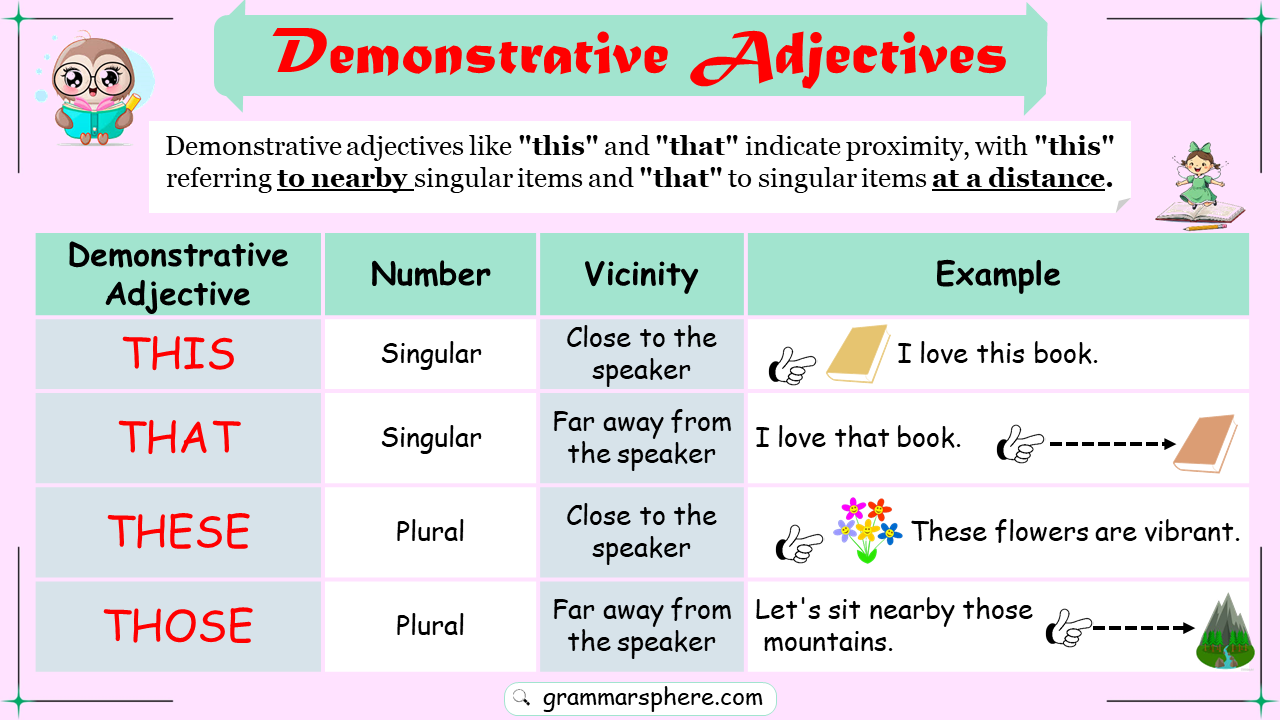
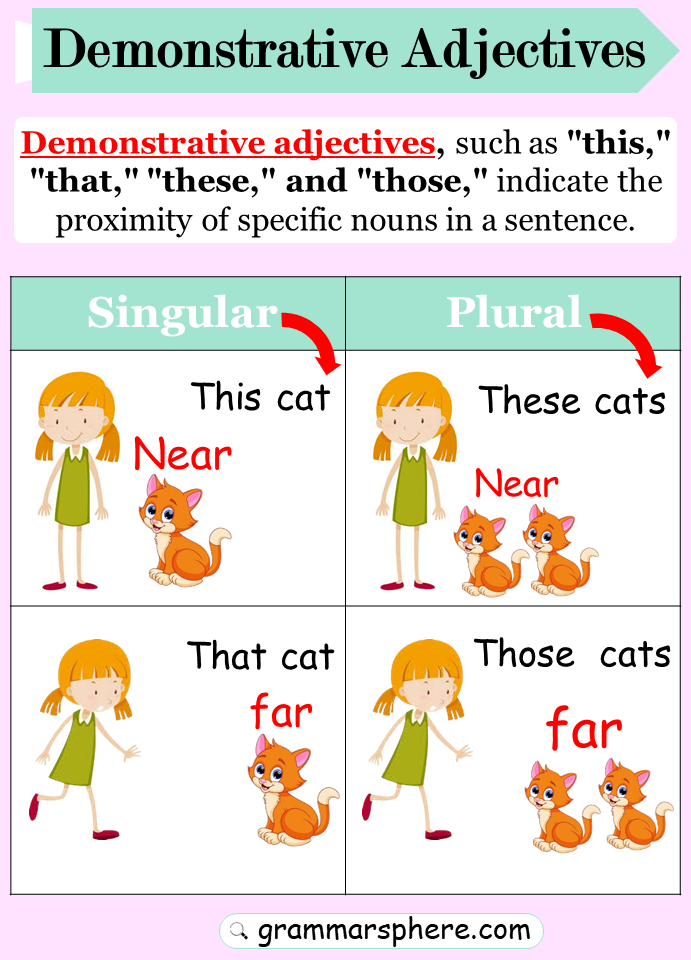
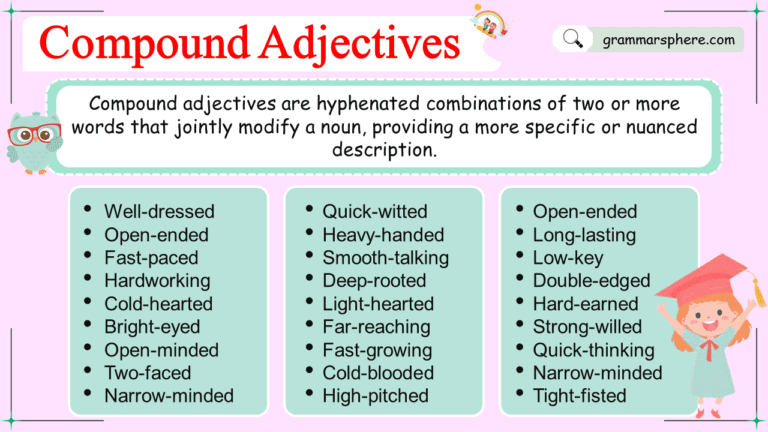
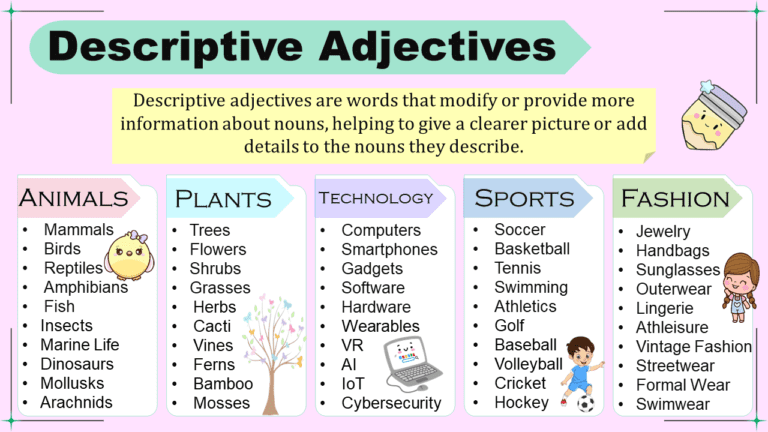
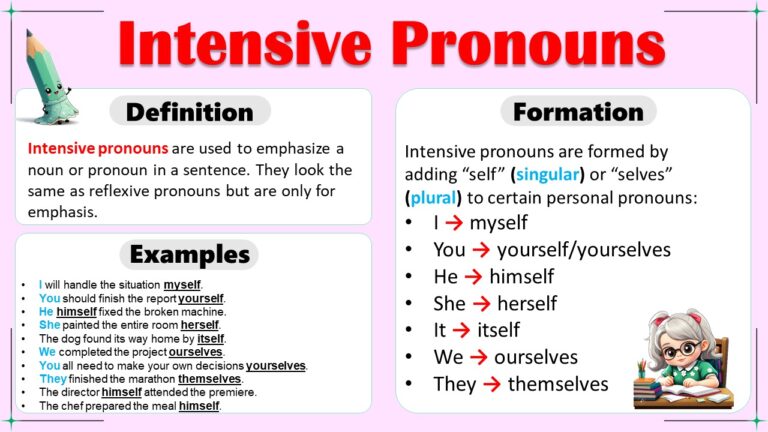
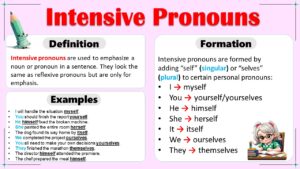
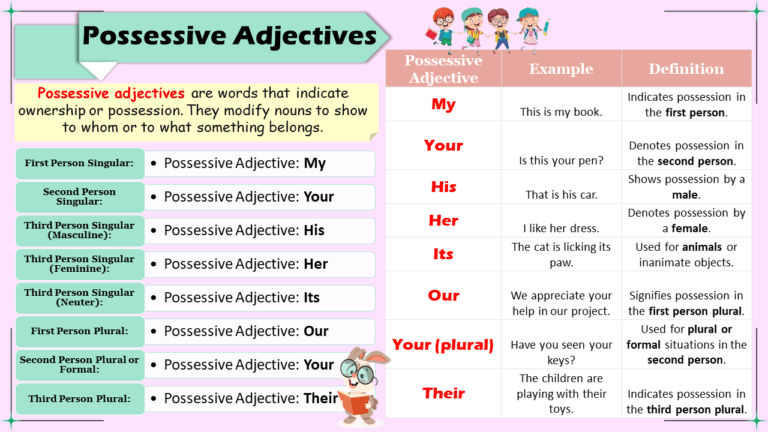
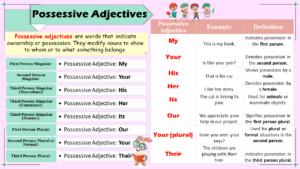
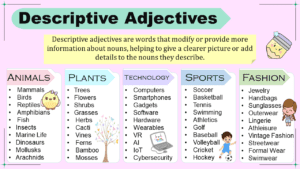
Leave a Comment